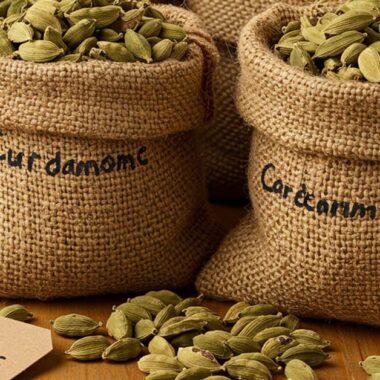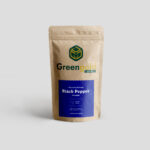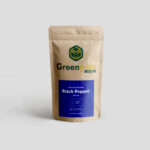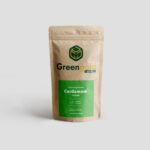Water is a vital resource for growing cardamom, and efficient water management is essential for maintaining healthy crops and high yields. With increasing pressure on water resources due to climate change, it has become even more critical for farmers to adopt water conservation techniques. In this blog, we will explore the best water conservation methods for cardamom farming, ensuring sustainable and efficient use of water for the health of the crops and the environment. 🌍
1. Drip Irrigation 💦
Drip irrigation is one of the most efficient methods of watering cardamom plants. It delivers water directly to the root zone, minimizing water wastage through evaporation or runoff.
Why it’s effective:
- Targeted watering ensures that each plant receives the right amount of water without excess.
- Reduces water wastage by avoiding surface irrigation.
- Helps maintain soil moisture levels and reduces the risk of root rot.
By implementing a drip irrigation system, cardamom farmers can significantly reduce water consumption while ensuring that their plants stay hydrated, especially during dry spells.
2. Rainwater Harvesting 🌧️
Rainwater harvesting involves collecting and storing rainwater for irrigation purposes. By capturing rainwater during the monsoon season, farmers can ensure a steady supply of water throughout the year.
Why it’s effective:
- Cost-effective: Reduces dependence on groundwater or external water sources.
- Sustainable: Uses natural rainfall, which helps replenish the water table.
- Farmers can store rainwater in tanks, ponds, or reservoirs and use it for irrigation during dry spells or low rainfall periods.
This technique is especially valuable for cardamom farmers in regions where water scarcity is a growing concern.
3. Soil Mulching 🌿
Mulching involves covering the soil around cardamom plants with a layer of organic material like leaves, straw, or compost. This helps retain moisture in the soil and reduces evaporation.
Why it’s effective:
- Reduces water loss through evaporation by providing a protective layer on the soil surface.
- Helps maintain soil temperature, preventing it from becoming too hot or too cold.
- Mulch also acts as a natural weed suppressant, reducing competition for water and nutrients.
Mulching is a low-cost and effective technique to enhance water retention, especially in regions prone to high temperatures or drought conditions.
4. Water-Efficient Irrigation Systems 💧
Apart from drip irrigation, other water-efficient irrigation systems like sprinkler irrigation and bubblers can help reduce water wastage. These systems distribute water in a way that minimizes evaporation and runoff.
Why it’s effective:
- Sprinklers can cover a large area efficiently, ensuring that the entire cardamom plantation gets watered evenly.
- Bubblers are perfect for localized irrigation, delivering water directly to the root zone with minimal loss.
Choosing the right system based on the farm’s size, location, and resources can significantly reduce water use while maintaining plant health.
5. Contour Farming & Terracing 🌿
Contour farming and terracing are techniques used to control water runoff in hilly or sloped regions where cardamom is often grown.
Why it’s effective:
- Terracing reduces soil erosion by slowing down the flow of water down the slope, allowing it to soak into the soil.
- Contour farming follows the natural contours of the land, which helps water to flow along the slopes in a more controlled manner, allowing better absorption into the soil.
Both of these techniques ensure that water is used efficiently and that cardamom plants receive consistent moisture.
6. Soil Health and Organic Farming 🌱
Maintaining healthy, organic soil can significantly improve water retention, reduce the need for excessive irrigation, and enhance the overall sustainability of cardamom farming.
Why it’s effective:
- Organic matter in the soil improves its water-holding capacity, reducing the need for frequent watering.
- Healthy soil with good structure allows water to penetrate deeper, reducing surface runoff.
- Using compost and organic fertilizers enhances soil health, making it more resilient to drought conditions.
Practicing organic farming also promotes biodiversity and reduces the reliance on chemical inputs, leading to better soil moisture retention and long-term sustainability.
7. Cover Cropping 🌾
Cover cropping involves planting certain crops between cardamom rows to improve soil structure, prevent erosion, and conserve moisture.
Why it’s effective:
- Certain cover crops, like legumes, can help improve soil fertility while reducing the need for artificial fertilizers.
- They help maintain soil moisture by preventing evaporation and reducing weed growth.
- Ground cover reduces direct exposure to the sun, helping to retain moisture in the soil around cardamom plants.
Cover cropping is a holistic way to improve water management and enhance soil health while preventing erosion.
8. Evapotranspiration Management 🌞
Evapotranspiration (ET) refers to the combination of water evaporation from the soil and plant transpiration. Monitoring and managing ET rates can help farmers determine the exact water needs of cardamom plants.
Why it’s effective:
- Helps to prevent over-watering, which can lead to waterlogging and root rot.
- Farmers can adjust watering schedules based on real-time weather conditions, ensuring that the cardamom plants get the precise amount of water they need.
- Automated irrigation systems can be set to water plants based on ET data, ensuring efficient water use.
By using ET management tools, farmers can optimize their irrigation schedules to use water more effectively and reduce waste.
9. Water-Efficient Planting Practices 🌱
Cardamom farmers can adopt strategic planting practices that help conserve water and improve irrigation efficiency.
Why it’s effective:
- Spacing plants appropriately allows water to reach the roots without excessive runoff.
- Planting cardamom in areas with natural shade (such as near trees or hillsides) can reduce water evaporation and maintain moisture levels in the soil.
- Use of drought-tolerant cardamom varieties can help minimize water needs while maintaining healthy growth.
Strategic planting not only saves water but also supports healthy crop development and reduces resource waste.
10. Water Recycling and Reuse 🔄
Farmers can implement water recycling systems to reuse irrigation water and reduce overall consumption.
Why it’s effective:
- By collecting runoff water from irrigation systems, farmers can filter and recycle it for future use, reducing the demand for fresh water.
- Recycled water can be stored in ponds or tanks and used during dry periods, making irrigation more efficient and sustainable.
Recycling water helps create a closed-loop system, reducing the need for external water sources and promoting sustainability in cardamom farming.
🌿 Conclusion 💧
Water is an essential resource for growing cardamom, and with climate change threatening water availability, it’s crucial for farmers to adopt effective water conservation techniques. From drip irrigation and rainwater harvesting to soil mulching and cover cropping, these water-saving practices can help ensure a sustainable future for cardamom farming.
At Greengold Guide, we are committed to supporting sustainable farming practices that conserve water and promote healthy cardamom crops. 🌱












